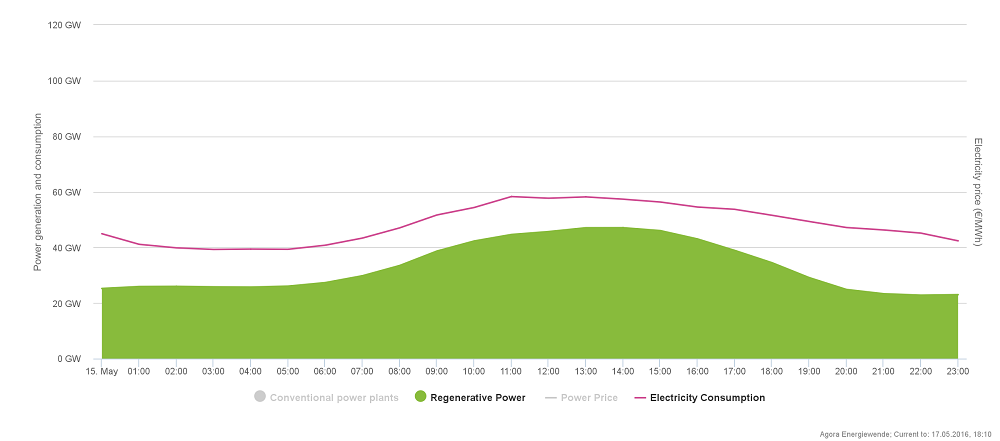This content is also available in: German
Why there was not 100 percent power consumption from renewable energies on Whit Sunday after all
Current data on power consumption is highly temporary and can change significantly on the following day based on altered principles

On Whit Sunday, 15 May 2016, the preliminary data from the “Agorameter” gave the impression that on an hourly basis, the power supply in Germany was covered 100 percent by renewable energy sources. This was reported many times on Twitter. However, the data available since the evening of Whit Monday, 16 May 2016, shows that on Whit Sunday, no full supply through renewable energies was achieved; instead, their share of power consumption totalled around 82 percent at most. The reason for this discrepancy is that the data on power consumption was updated. On Whit Sunday, we constantly pointed out that the data was temporary during the Twitter discussion and warned against making premature interpretations. We did not elect to use the term “100 percent”.
What is the reason for the different data?
In the Agorameter, power consumption is calculated on a general basis by adding up the data on power imports to the power generation and subtracting power exports. In order to do this, generation data from conventional energy sources is also required. This data is usually only available after a day’s delay. For the current frame – in particular the current day – this load calculation method cannot therefore be applied.
In order to be able to deliver current consumption data, however, we use the load data provided by ENTSO-E for the current day. This data is calculated according to a method similar to the one described above. In the Agorameter, this data is depicted using dots on the consumption curve. However, the load data according to ENTSO-E does not cover the full generation data and for this reason provides lesser, and in our view incomplete, values. In order to overcome this difference, we use an extrapolation method. Usually, this method is reliable, although in extreme situations in particular, like all extrapolation methods, it does have its weaknesses. This can result in load data that is too low, for example.
Improvements are being planned
For us, providing reliable information is of great importance. For this reason, we will be working on improvements to the Agorameter in the coming days. Here, the aim will be to increase forecast accuracy as far as possible. Furthermore, we aim to label any potentially imprecise information more clearly.
